The Institute’s manuscript collection provides primary source documentation of the American Revolution from the points of view of its participants. Official communications transmit military orders and intelligence about the enemy. Personal letters home reveal soldiers’ hopes and fears. Diaries offer details of battles, marches and camp life. Post-war memoirs recount the events with perspective and hindsight.
Muster rolls, clothing and equipment accounts, hospital registers and other records support research on military organization and management. A special strength is a collection of more than fifty American and British orderly books, which document the day-to-day operations of individual units.
The study of the art of war is reflected in cadets’ exercise books, manuscript extracts from published treatises, and original works on the theory and practice of warfare by military officers. The finely executed illustrations of many of these works demonstrate that the art of drawing was considered an essential part of a military education in the eighteenth century.
Explore Orderly Books
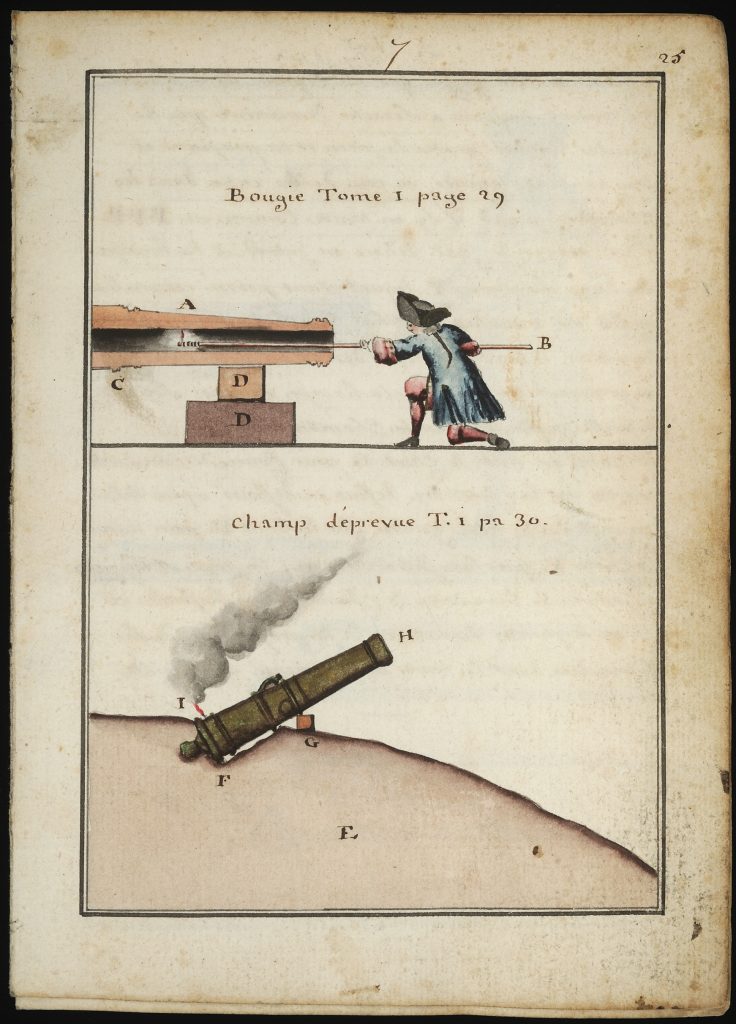
“Figures de l’Artillerie Pratique, Tome 2”
Jean Alexandre, baron d’Espiard de Colonge
Mid-18th centuryThe Robert Charles Lawrence Fergusson Collection
This watercolor drawing depicting the test-firing of a cannon is part of a volume of plates detailing all aspects of the production and use of artillery. Labeled “Tome 2,” the work is thought to have been intended for publication with a text volume, now lost. The author, baron d’Espiard de Colonge, was field marshal and director of the Guyenne Artillery in France.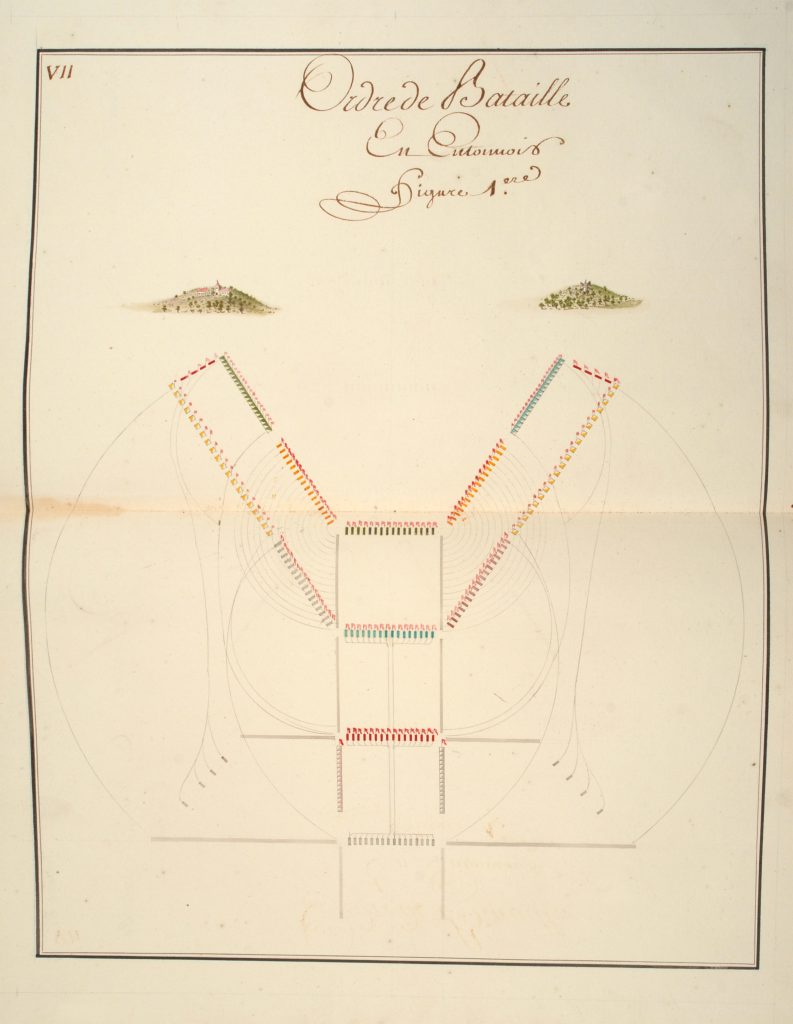
“Manuscrit Militaire … qui Contient des Principes Raisonnés de Tactique sur les Mouvements Particuliers des Bataillons…. La Castrametation, la Fortification de Campagne et Enfin sur la Défense des Retranchements”
Jean Victor, baron de Traverse
1757-1771The Robert Charles Lawrence Fergusson Collection
This double-leaf plate of an order of battle is part of a two-volume illustrated manuscript on military tactics and maneuvers, the art of laying out camps, and the construction and defense of field fortifications. The author, a lieutenant general in the French army, published several treatises on the art of war during the era of the Revolution.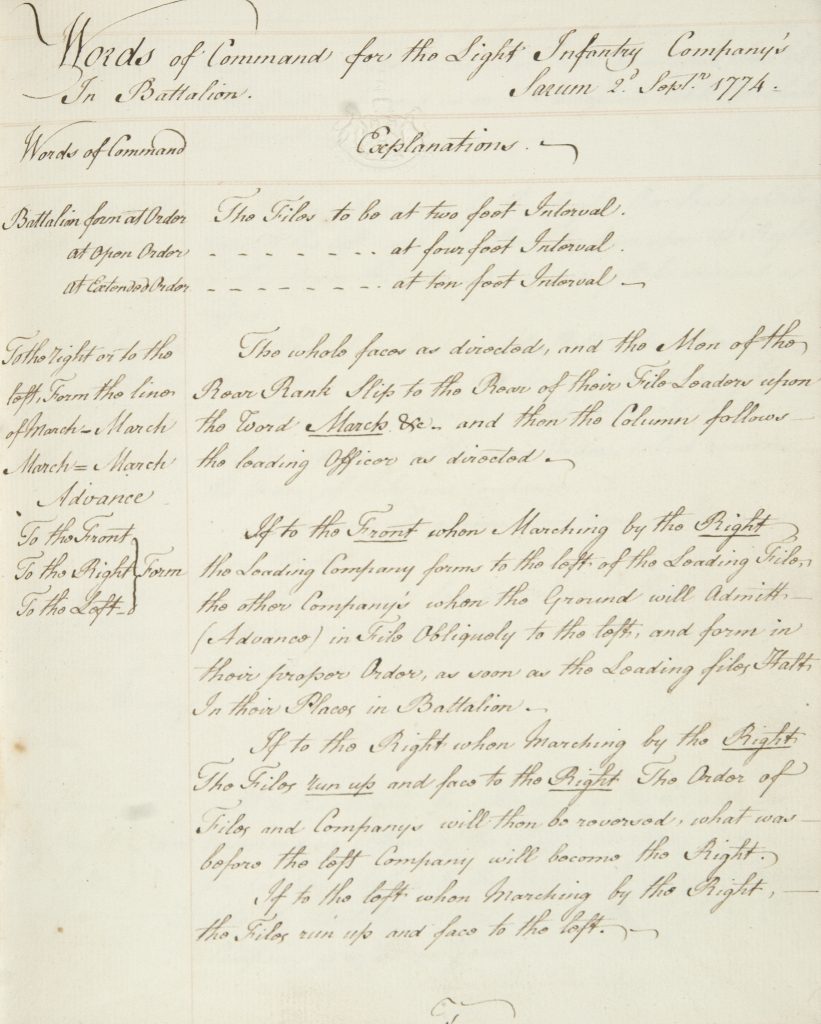
“Method for exercise of the light infantry”
William Howe, 5th viscount Howe
1774The Robert Charles Lawrence Fergusson Collection
In the years following the Seven Years’ War, the British army sought to reform infantry tactics to use elite “light” companies within foot regiments. During the summer of 1774, Maj. Gen. William Howe established an infantry camp at Salisbury to train the selected companies in the new method. Within two years Howe’s reorganized infantry faced its first major challenge, when he became commander in chief of the British forces in America. This manuscript volume bears the ownership inscription of Lt. Gen. George Lane Parker when he was colonel of the Twentieth Regiment of Foot in 1778.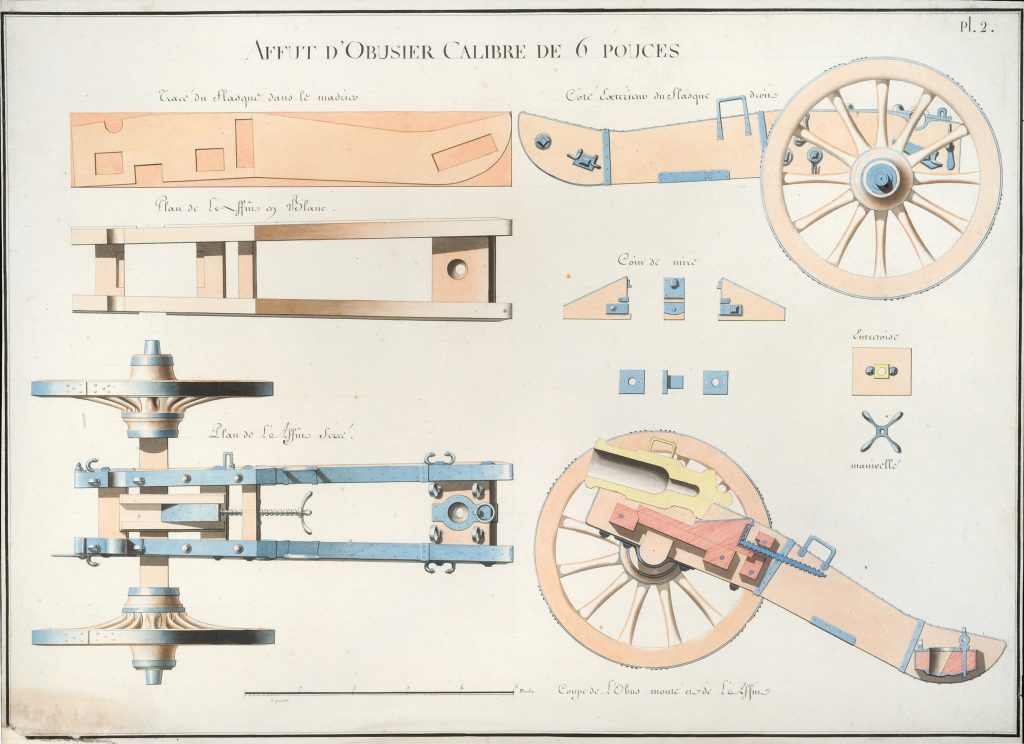
“Artillerie dessins”
1762-1792
The Robert Charles Lawrence Fergusson Collection
This plate details the construction of a carriage for a six-pound howitzer. It is part of a collection of 160 large-format measured drawings for the patterns and designs of sea- and land-service artillery used by the French forces during the era of the American Revolution. The plates document the shift from the Vallière system to the innovation of lighter, more maneuverable artillery promoted by Jean-Baptiste Gribeauval.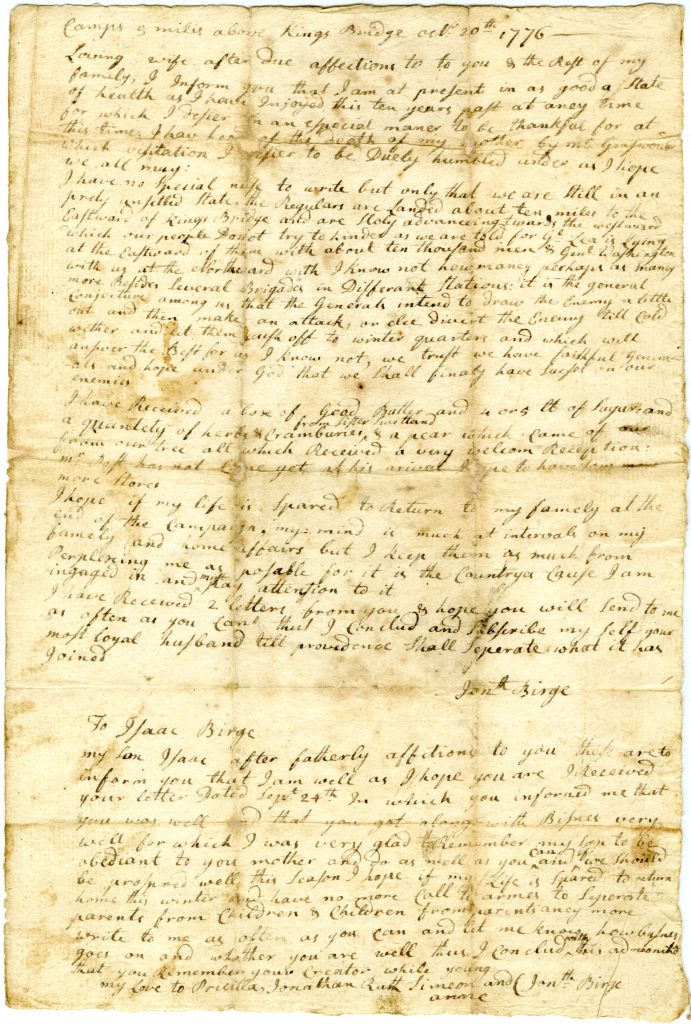
Jonathan Birge to Priscilla Birge
October 20, 1776The Robert Charles Lawrence Fergusson Collection
This is one of six letters written by Capt. Jonathan Birge of Connecticut to his wife describing the activities of his regiment during the difficult New York campaign. Emotions of love and loss are intertwined with details of company activities, troop movements, requests for supplies, sickness and causalities.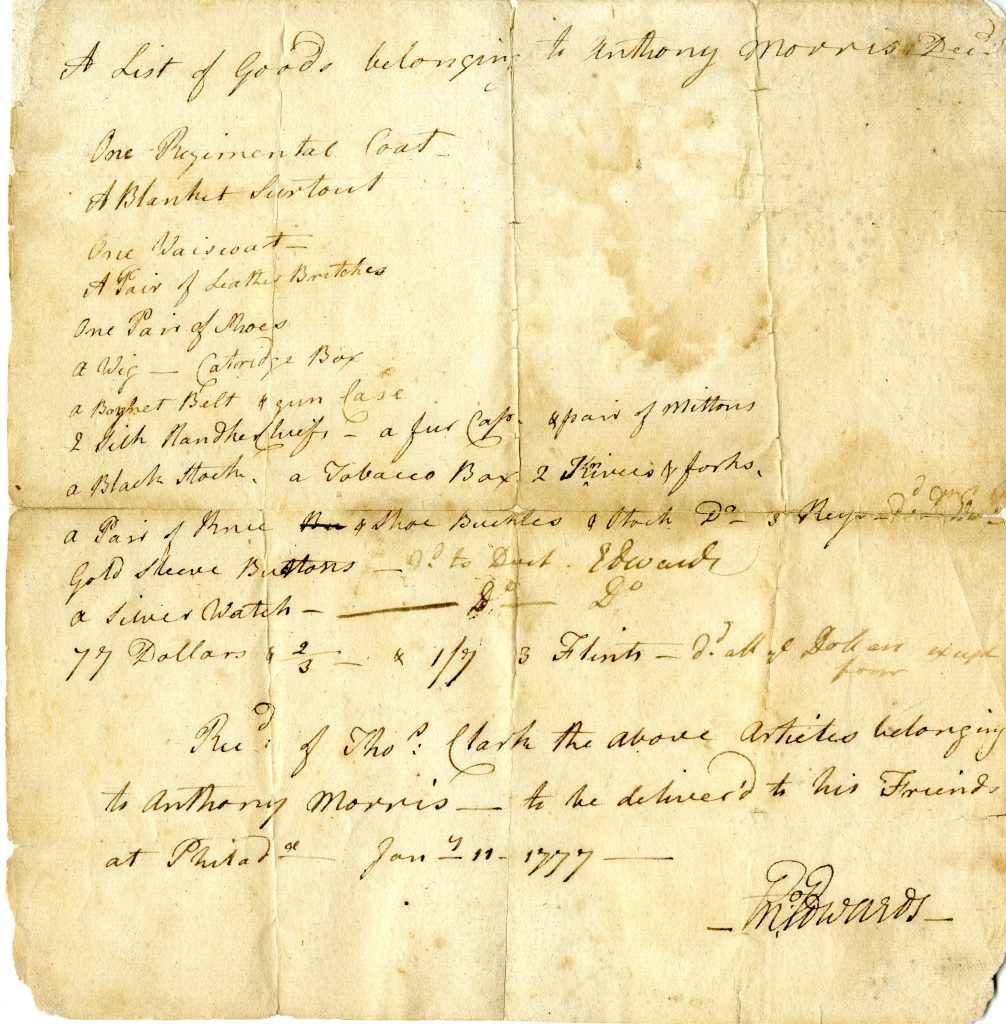
“A List of Goods belonging to Anthony Morris Dec’d”
Enoch Edwards
January 11, 1777The Robert Charles Lawrence Fergusson Collection
Anthony Morris, Jr., served in the Pennsylvania militia under Col. John Cadwalader. During a charge against the British during the Battle of Princeton, Morris was stabbed in the neck by a bayonet and hit with grapeshot. He was taken to the nearby Thomas Clark house where he died three hours later. This inventory of the possessions on his body is signed by the attending physician. The list includes Morris’s uniform, shoes, wig, cartridge box, belt, fur cap, mittens, tobacco box, knives and forks, buckles, keys, buttons, flints, watch and seventy-seven dollars.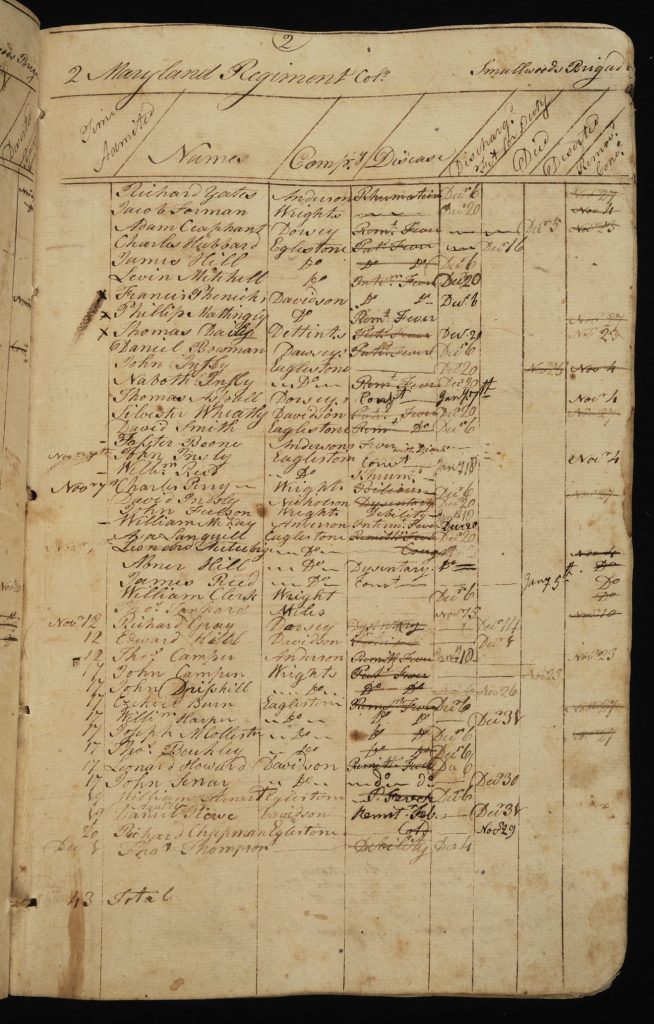
Register of patients admitted to a Continental Army hospital
September 16, 1778-early January 1779The Robert Charles Lawrence Fergusson Collection
Continental Army physicians relied on registers like this to account for and monitor patients under their care. This register lists patients according to their individual regiments and conveys important information pertaining to soldiers’ illnesses or injuries, with the malady crossed off when the patient was discharged. The register includes columns such as “Deserted” along with “Fit for Duty” or “Died."![Click for a larger view. “Cayer Des Evolutions,” Antoine-Robert, vicomte du Cluzel, [ca. 1777]](https://www.americanrevolutioninstitute.org/wp-content/uploads/2018/08/Cayer-des-Evolutions-by-Cluzel-title-pg-MSS-L2005F184-819x1024.jpg)
“Cayer Des Evolutions”
Antoine-Robert, vicomte du Cluzel
[ca. 1777]The Robert Charles Lawrence Fergusson Collection
The author of this notebook delineating naval formations and exercises was a lieutenant de vaisseaux in the French navy who served in America during the Revolutionary War. He later became an original member of the Société des Cincinnati de France.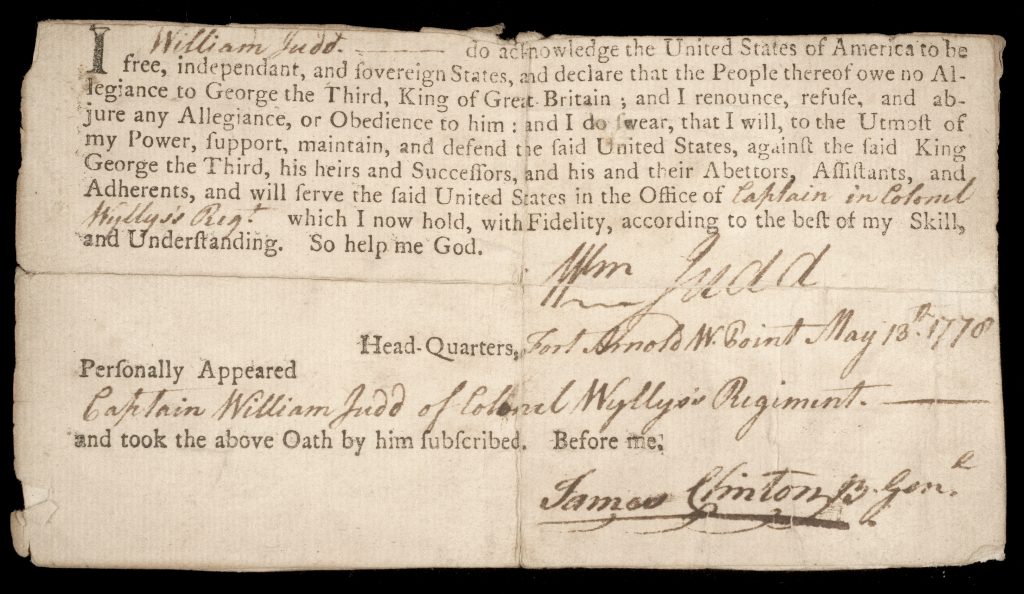
Oath of allegiance to the United States
May 13, 1778Gift of the children of William Hart Judd, Jr., in his memory and in memory of their grandfather, William Hart Judd, 2010
Capt. William Judd of the Third Connecticut Regiment signed this printed oath at Fort Arnold near West Point acknowledging “the United States of America to be free, independent, and sovereign States” and swearing to “support, maintain, and defend said States against the said King George the Third.”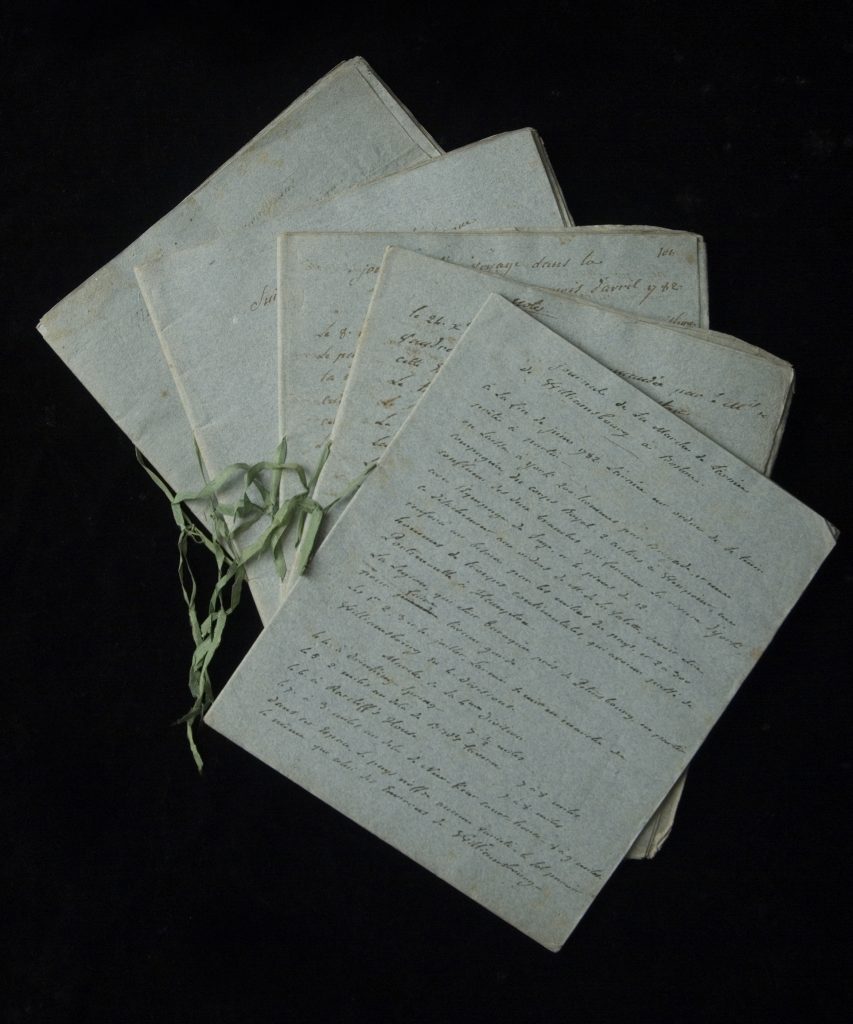
“Notes relatives aux mouvemens de l’armee françoise en Amerique”
François-Ignace Ervoil d’Oryé
Late 18th centuryThe Robert Charles Lawrence Fergusson Collection
This set of five bound journals kept by a French army engineer with Rochambeau’s forces documents his experiences in America from his arrival at Newport, Rhode Island, in 1780 through his march with the allied armies from New England to Virginia to take part in the siege of Yorktown. It also includes his later travels in Virginia with the marquis de Chastellux and the French army’s march back to Boston. The journals were probably written after his return to France and appear to have been drawn largely from a group of letters (also present) he had written to his family during the war.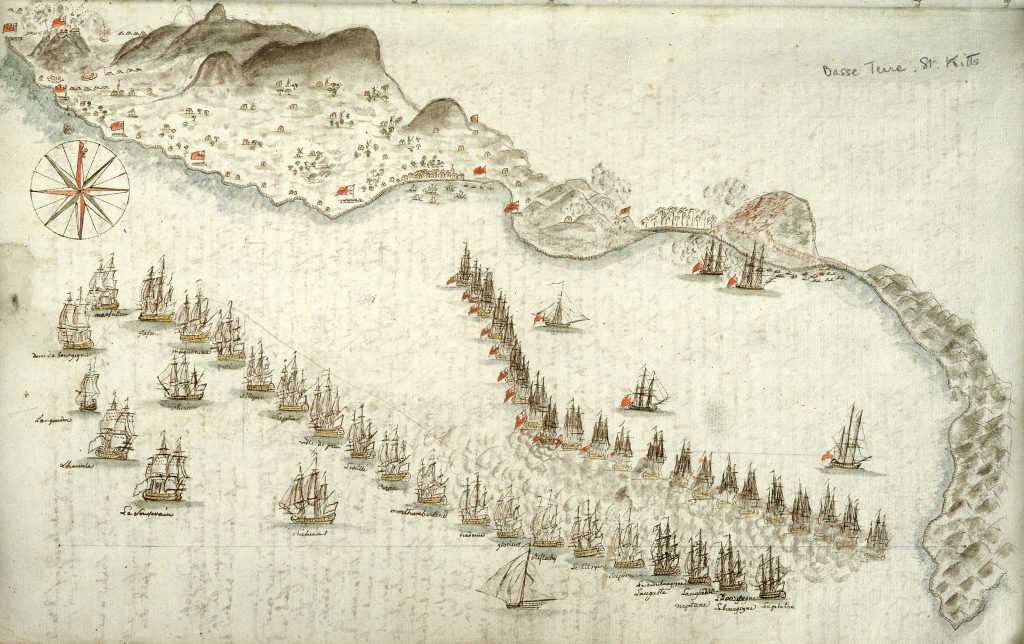
“Journal de la Campagne que j’ai fair sur le Vaisseau Le Souverain commande par Monsieur le Commandant De Glandeves en 1780”
ca. 1780-1783The Robert Charles Lawrence Fergusson Collection
This full-page watercolor drawing depicting the engagement between the fleets of de Grasse and Hood at St. Kitts-Nevis, January 25-26, 1782, is part of the manuscript journal of the naval operations of the French seventy-four-gun ship Souverain, commanded by Jean-Baptiste, baron de Glandeves, during the Revolutionary War.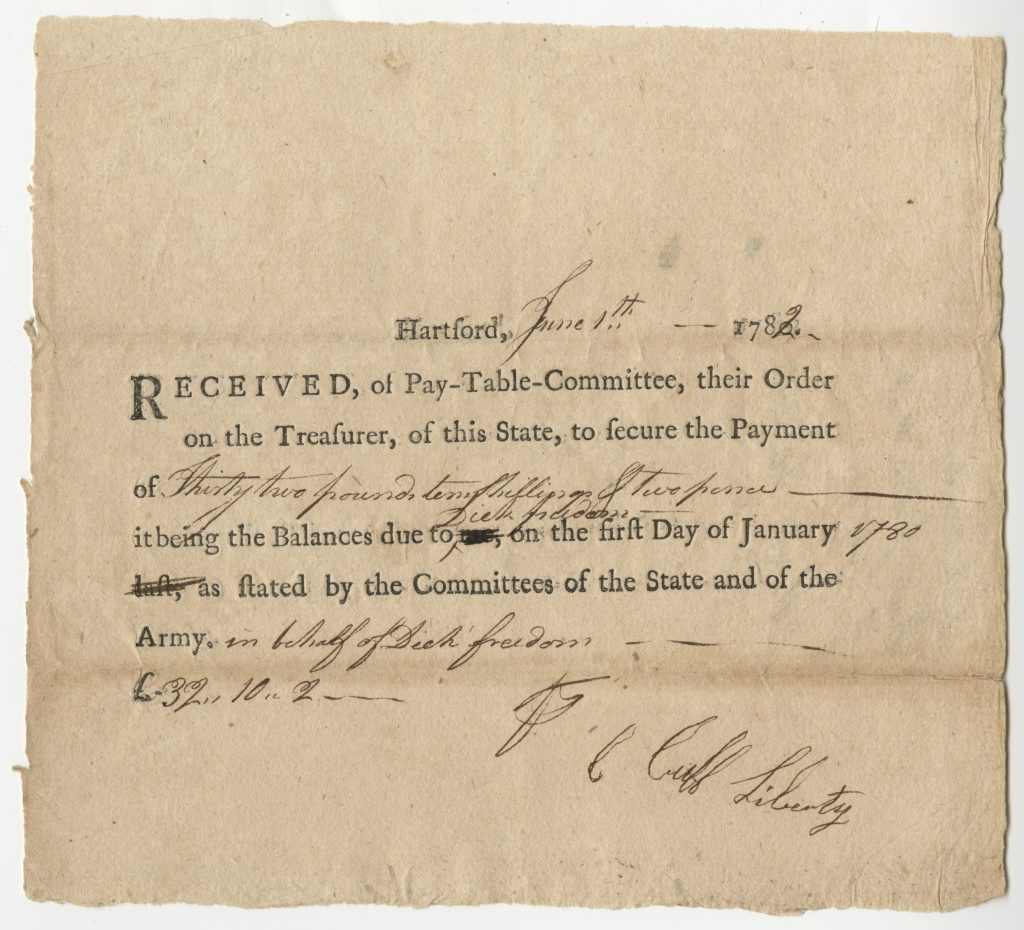
Connecticut Pay-Table Committee receipt
Cuff Liberty and Dick Freedom
Hartford, June 7, 1782The Robert Charles Lawrence Fergusson Collection
This manuscript is a receipt to secure the payment of “thirty two pounds, ten shillings, & two pence” to a man named Dick Freedom and signed for by Cuff Liberty. Presumably adopting aspirational names, Dick Freedom and Cuff Liberty were two of the many African American men who served during the Revolutionary War in the all-black Second Company of the Fourth Connecticut Regiment and likely fought at Yorktown.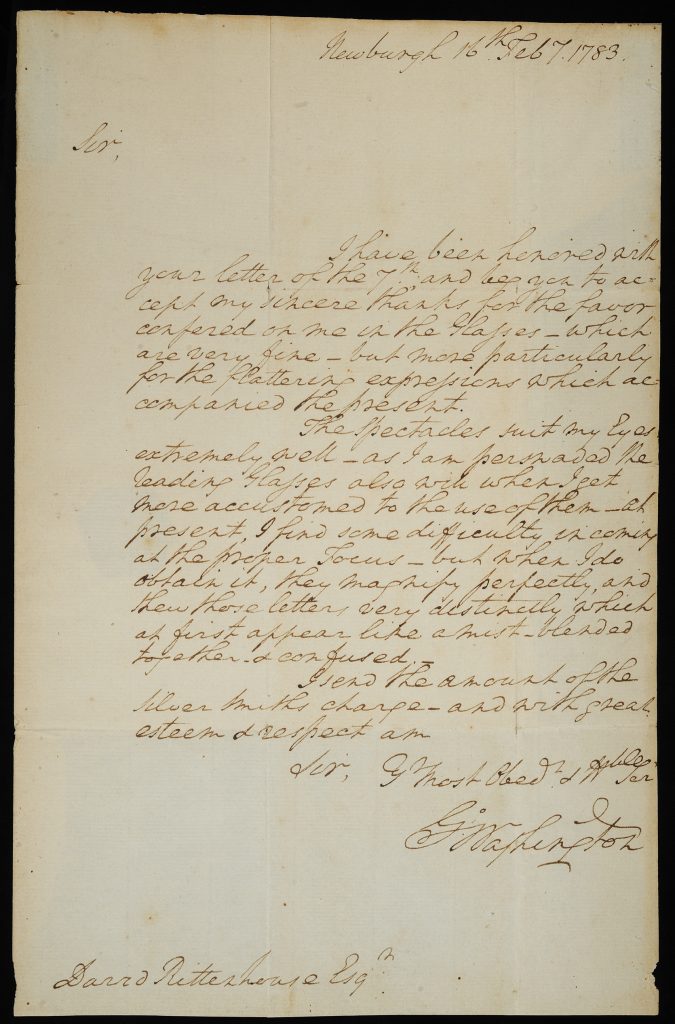
George Washington to David Rittenhouse
February 16, 1783Gift of George Miller Chester, Jr., in honor of his great-great-great-great grandfather, Col. John Chester, 2015
George Washington wrote this letter of thanks to the noted American inventor and instrument maker, David Rittenhouse, who had made a set of spectacles—one for distance and one for reading—for the general. Just three weeks later, the reading glasses would be used to great effect when Washington, in attempting to quell a brewing mutiny of officers at Newburgh, pulled them from his pocket and said, “Gentlemen, you must pardon me. I have grown gray in your service and now find myself growing blind.”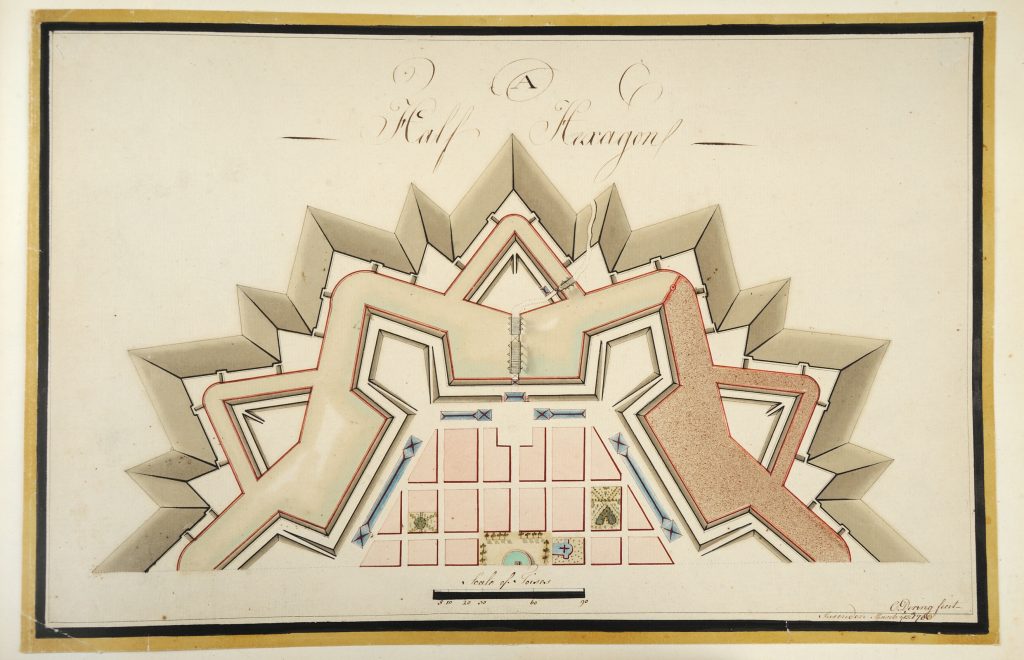
“A Half Hexagon”
Chomley Dering
1783The Robert Charles Lawrence Fergusson Collection
This is one of forty-eight watercolor drawings of fortifications done by a student at Lewis Lochée’s military academy in England. Dering was a cornet in the Sixteenth Light Dragoons at the time and would go on to become a cavalry commander and a member of Parliament.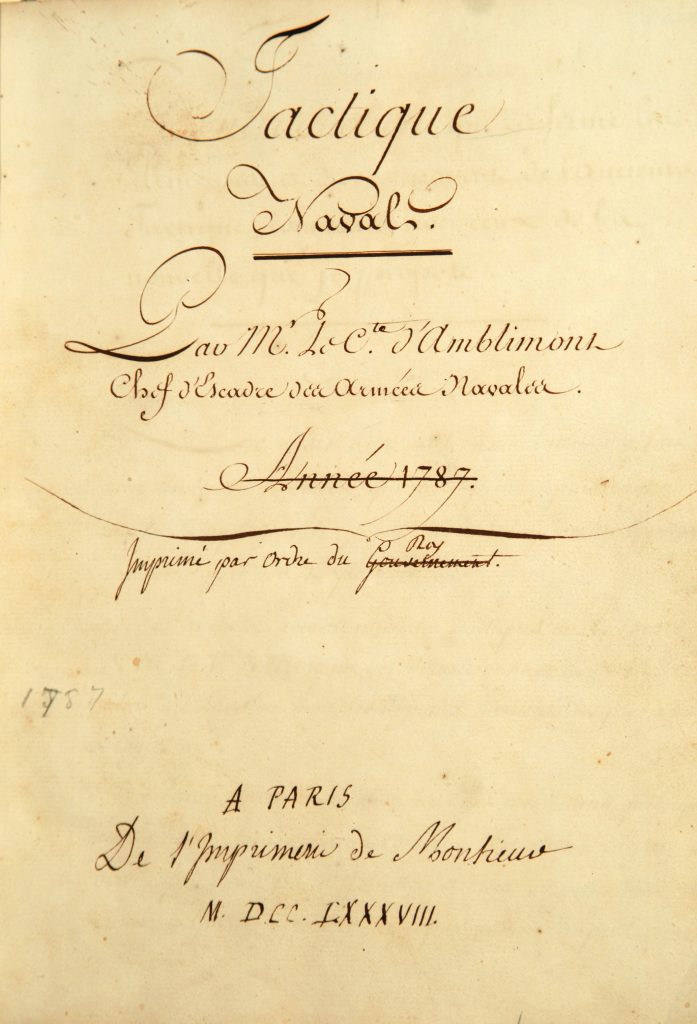
“Tactique Navale, ou, Traité sur les Évolutions, sur les Signaux, et sur les Mouvements de Guerre”
Claude-François Renart, comte d’Amblimont
Paris, 1787Gift of Thomas Sumter Tisdale, Jr., 2006
This manuscript of the comte d’Amblimont’s treatise reflects his experiences as a French naval officer during the American Revolutionary War, including a new and original system of organizing a fleet into pelotons, or tactical groups of differing functions, as opposed to the set three-column order of sailing that was in general practice. The work was published under the same title in 1788. This manuscript bears annotations for the printer, including a correction in the publication statement in which the word “Gouvernement” has been crossed out and “Roy” is substituted.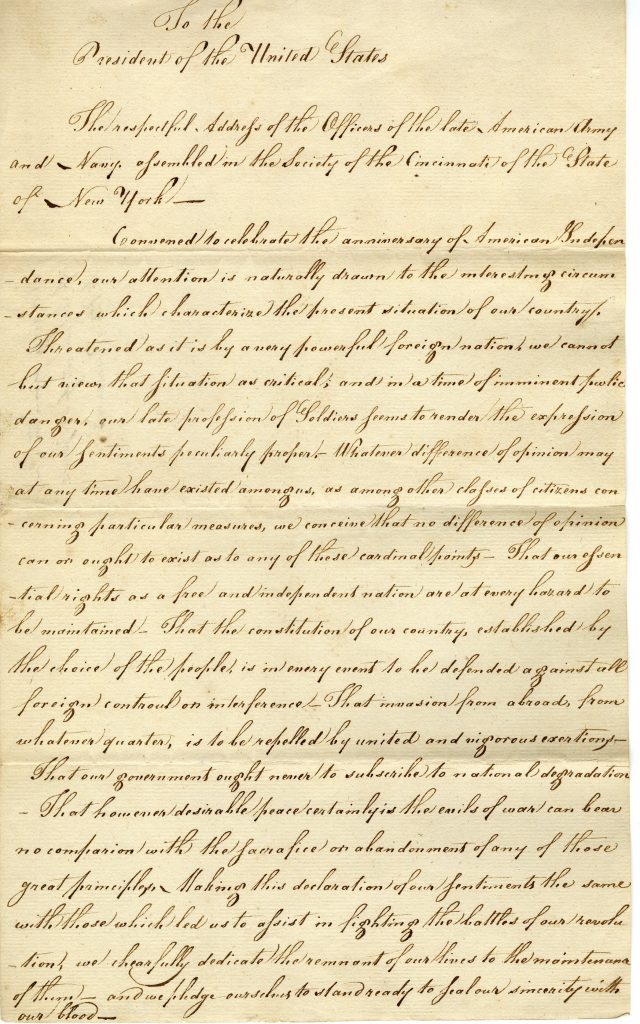
“To the President of the United States: The respectful Address of the Officers of the late American Army and Navy assembled in the Society of the Cincinnati of the State of New York”
New York State Society of the Cincinnati
1812The Robert Charles Lawrence Fergusson Collection
The members of the New York branch of the Society of the Cincinnati addressed President James Madison on the subject of the threat of war with Great Britain in this letter. They were united on several cardinal points: “That our essential rights as a free and independent nation are at every hazard to be maintained. That the constitution of our country, established by the choice of the people, is in every event to be defended from all foreign control or interference. That invasion from abroad, from whatever quarter, is to be repelled by united and vigorous exertions.” They concluded that “making this declaration of our sentiments the same with those which led us to assist in fighting the battles of our revolution, we chearfully dedicate the remnant of our lives to the maintenance of them—and we pledge ourselves to stand ready to seal our sincerity with our blood.”